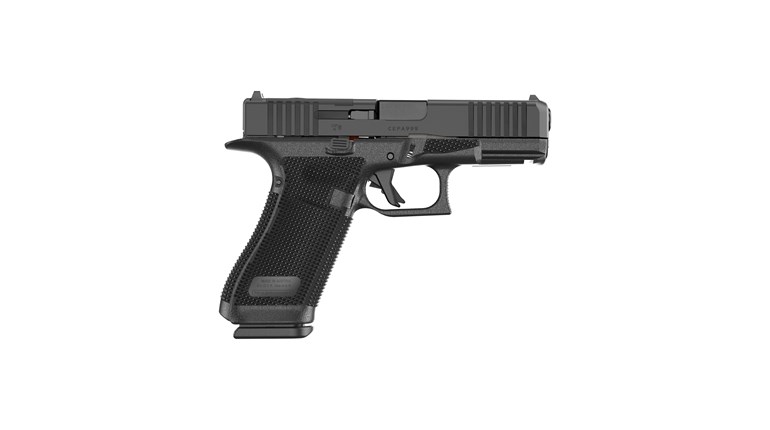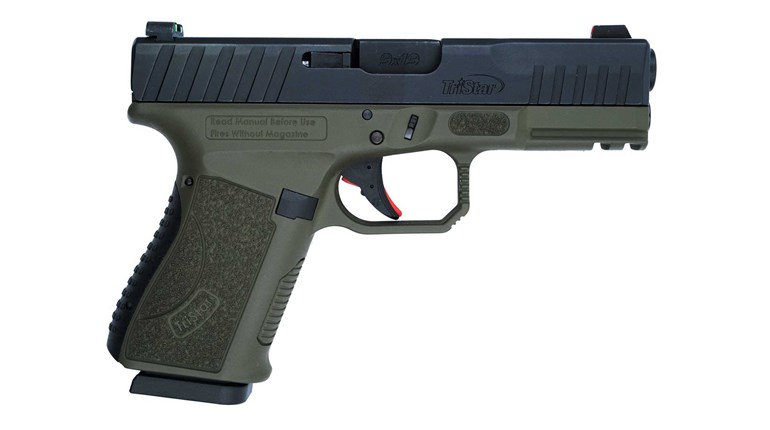
When I began pistol shooting, one of the first things I noticed was that the ease with which I shot differed widely from pistol to pistol-even between guns that were very similar in terms of size, action type, weight and caliber. As a beginner, I blamed myself first: My hands just weren't big enough for some guns' grips. What I didn't know was that there was a subtle but very important factor that I was totally missing.
There are actually four measurements relating to a handgun's grip frame that are relevant to how an individual shooter will experience that gun. The one that gets all the headlines, particularly when those of us with smaller hands are shopping for guns, is grip circumference. The second is width, which is related to the circumference. The sheer length of your hands comes into play when you're working out gun fit as it relates to these first two measurements. The third is trigger reach, which is the distance from the trigger's face to the backstrap, and it helps determine where your index finger will contact the trigger.
It's the fourth measurement that tends to be overlooked, but it can hold a lot of importance for your comfort: the grip angle. More properly termed "pitch," grip angle is the angle of the grip in relation to the axis of the bore. It affects comfort, as well as where you naturally point the gun as you bring it up into firing position.
It's important that I include a caveat here. An experienced shooter who has practiced their grip in a wide variety of situations, with a wide variety of handguns, can compensate for all manner of differences in all of the measurements. It's also important to note that there is no "right" or "wrong" grip angle. But if you're already working with hands smaller than most gun's designs accommodate, I believe finding the grip angle that works for you can make a real difference in how much range time you'll want to put in. That, in turn, will affect your future success.
To test this hypothesis, three women co-workers and I headed down to NRA's test range to do some casual shooting. Some of us are relatively experienced; others not so much. I selected four semi-automatic, compact handguns chambered in 9mm, to provide as close an apples-to-apples comparison as possible: A Springfield Armory XD(M)9 3.8, a Smith & Wesson M&P Compact, a Ruger SR9C and a Glock 17. We weren't there to evaluate the guns (or ourselves, really) in terms of accuracy-I only wanted to examine which gun felt the most natural and pleasant to shoot for each individual woman. Here are their thoughts:
Tiffany Ngu (5'4")
Before the test, Ngu had done some shooting with a number of handguns similar to today's test guns. She was surprised to find that she preferred the Ruger SR9C to the rest of the pistols. Remarked Ngu, "It's the same size as all the other guns, but it just felt like it fit better. I think I want to buy one, now."
Laura Cromwell, (5'2")
With the smallest hands of all of the women testers, Cromwell found the Glock a bit heavy and noted that the recoil caused the backstrap to bite into her fingers in a way none of the other guns did. Remarked Cromwell, "Both the Springfield XD(M)9 and the Smith & Wesson M&P shot smoothly and offered very manageable recoil, but the Ruger SR9C was the most natural to grip and aim."
Lia Dangelico (5'8")
Dangelico was the newest to shooting of all of us, as well as the tallest. Despite her worries that she wasn't going to be any good, she made four very respectable groups with each pistol. But which one did she find the most natural to shoot? "The most comfortable of all four of those guns was the Ruger," she stated.
Yours Truly, 5'5"
When I was brand-new to shooting, the first semi-automatic gun I ever tried was a Glock 17 identical to the one in this test. I'd loved it at the time, and wondered how my memories would stack up. Although as smooth-shooting as ever, my Glock groups did tend to wander up and a bit to the left even when I felt that my sight picture was perfect. For me, the experience of bringing the Springfield XD(M) on target is intuitive, as if I were making the bullets travel by telepathy.
What had changed-me, or the gun? Chad Dyer, marketing coordinator for Springfield Armory, commented, "The grip angle of the XD(M) is the same as the 1911. This makes the transition to the XD(M) very easy for most shooters, as well as those just starting out. Adding to the comfort of the XD(M) are the interchangeable backstraps, which allow the shooter to customize the grip circumference to their hand size."
The engineers at Sturm, Ruger took a similar approach to grip-angle design. Relates Ruger's Ken Jorgensen, "The SR9C employs a 13-degree grip angle, the same as the 1911. This is going to be the most natural angle, as that grip angle causes the muzzle to point at the target without any manipulations on the part of the average shooter. The reversible grip insert helps fine tune the effective grip angle." Continues Jorgensen, "The larger grip angles (as measured from vertical) tend to rotate the gun upward, and smaller grip angles downward."
What does all this mean? There is no "one size fits all." Even firearms that look virtually identical on paper may not feel the same way on the firing line. When you're shopping for a pistol, no matter what you've read, heard or been told about a given model, it's critical to take it for a test run before you buy. You'll thank yourself later.







































